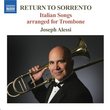| All Artists: De Meij, Kuijpers, Royal Military Band Title: Lord of the Rings Members Wishing: 0 Total Copies: 0 Label: Ottavo Recordings Release Date: 11/13/1992 Genre: Classical Style: Number of Discs: 1 SwapaCD Credits: 1 UPC: 723721156626 |
Search - De Meij, Kuijpers, Royal Military Band :: Lord of the Rings
CD DetailsSimilar CDs |
CD ReviewsMay inspire you to read the book 03/18/1999 (5 out of 5 stars) "De Mey's Lord of the Rings symphony is probably destined to take its place next to the Holst suites in the symphonic band canon; it beautifully showcases the versatility and power of a good wind band. Particularly nice is a rich, resonant low brass theme in the first movement, evocative woodwind soli in the second, and the massed clarinets at the core of the chorale in the fifth. The performance is first-rate, expressive and exceptionally clean; listen especially for the last repetition of the dance tune in the fifth movement. The soloists, too, are excellent, particularly the soprano sax soloist in the third movement. The symphony itself is divided into 5 movements: Gandalf (the wizard), Lothlorien (the Elvenwood), Smeagol (Gollum), Journey in the dark, divided into The Mines of Moria and The Bridge of Khazad-dum, and Hobbits. The first movement opens with a brass fanfare and straightaway goes into a low brass theme representing the wizard Gandalf, variations of which are heard in the fourth and fifth movements. The second half of the movement, more spirited, brings in a piano for an impression of the horse Shadowfax and the wild ride across the plains of Rohan. Movement 2 is more impressionistic; its first half is a depiction of Lothlorien as it first appeared to the travellers, beautiful, but dream-like, half in and half out of the world. A woodwind theme will reappear in the fifth movement. "Lothlorien" ends with Frodo's visions in the mirror of Galadriel, the last of which, the searching Eye of Sauron, will be instantly recognized by those who have read the book. Movement 3 is a portrait of Gollum, in many ways the true central character of the book. It is very schizophrenic music, by turns sneaky and slippery and cruel and menacing, representing the Smeagol/Gollum (or Slinker/Stinker) sides of his character. The fourth movement is, to my mind, the weakest: though parts of it are splendidly evocative of darkenss and hollow, echoing depths, and though the brassy theme of the Balrog and the grand rise and fall of Gandalf's theme are excellent, the pacing is off-- the Balrog episode enters almost without warning and dies immediately into a Marche Funebre. Meant to seem sudden and surprising, it comes off as disconnected. The lack of effective transitions is the more surprising because there is no motivation for it in the book, where the Balrog episode is foreshadowed in the retreat from the Chamber of Mazarbul and followed by a desparate battle to gain the door. But despite these flaws, it is still fairly gripping. Movement 5 is the best by far. It begins with a more subdued version of the opening theme, then moves into a dance tune, very sprightly and joyful, with many variations in the orchestration. The same tune is heard again, transformed into a chorale, at which point it becomes clear that it is a setting of Bilbo's travelling song ("The Road Goes Ever Ever On"). This builds in intensity and segues into a grand version of Gandalf's theme, but the piece ends on a quieter note, with the Elven-theme from the second movement heard again, representing the departure of the Ring-bearers from the Grey Havens at the novel's end. Lest this synopsis may have frightened away readers unfamiliar with the book, let me stress that the music is wonderful in and of itself and requires no such familiarity to be enjoyed-- though I would not be surprised if listeners were inspired to read the book!" Excellent, however New Amsterdam Wind Symphony is better 03/07/1999 (4 out of 5 stars) "I have played the entire symphony. Mr DeMeij will be remembered for all time for this momumental work. It is written to be played as well as listened to.This recording is excellent. However some tempos seem a bit faster than specified by the composer. The New Amsterdam Wind Symphony recording as conducted by Johnn DeMeij is just a bit better in this regard. Note that I'm being especially "picky" having played the symphony. I have both recordings and either one is a superb listening experience"
|


